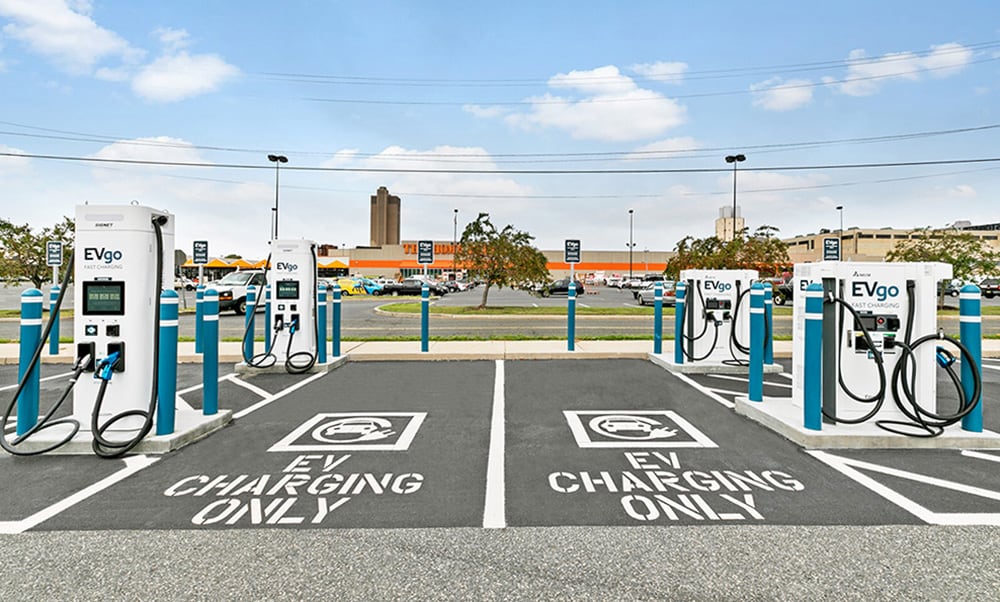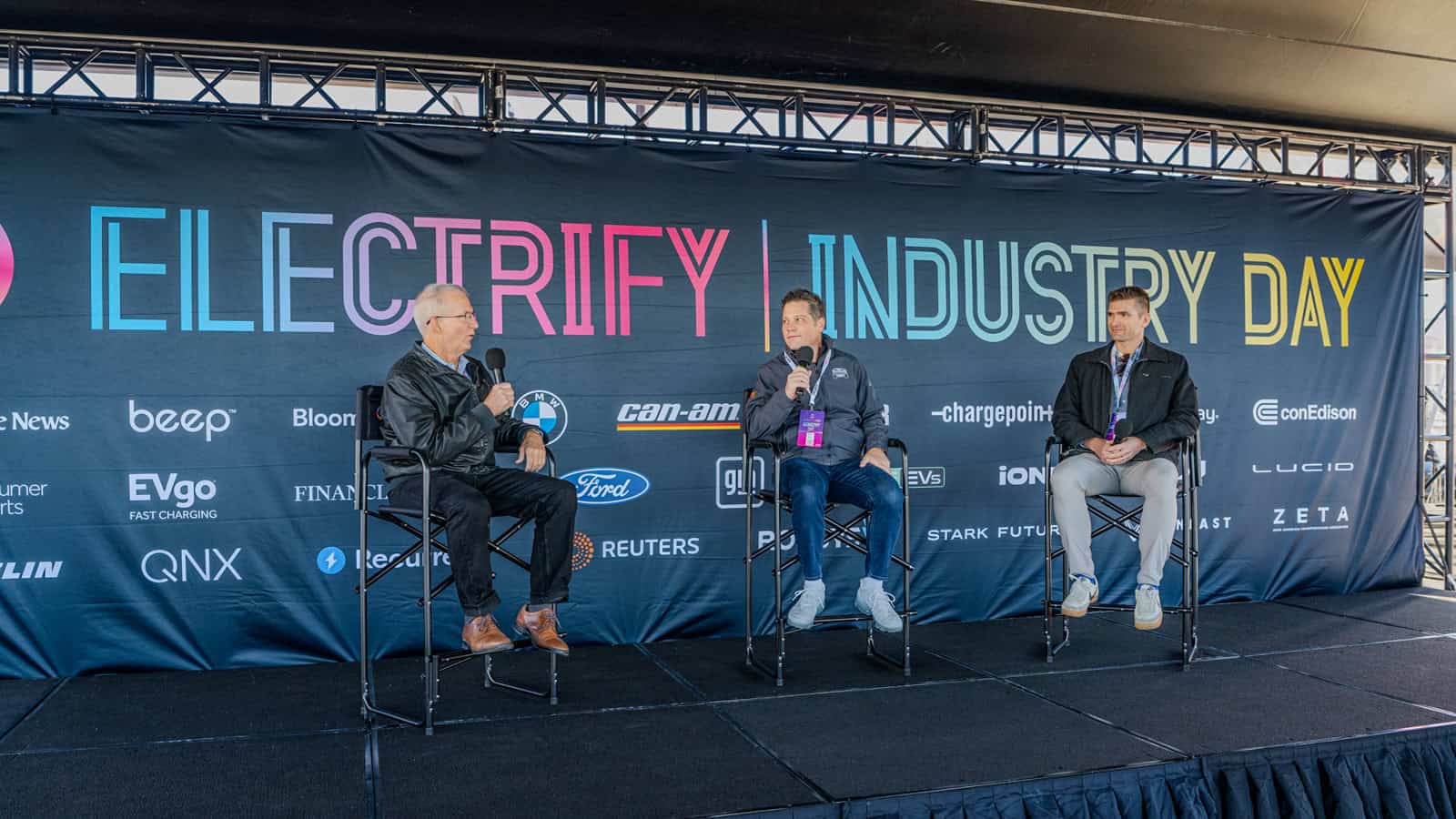- EVgo recently installed a new prefabricated charging station in the Houston metro area.
- Prefab charging stations can cut installation time by 50%, and they are also cheaper to install than other types of charging stations.
- Lack of charging infrastructure hurts EV adoption, so using a variety of charging station types can expand options and make EVs seem more viable.
EVgo announced last month it had installed its first public EV charging stations using a prefabricated approach. That caught my eye for two reasons. It was in Texas, where I’m from, and where, though oil is big business, property developers do see value in adding public charging infrastructure, it appears.
More intriguing, however, was the prefabricated aspect of the EVgo charging station. The prefab stations can be installed up to 50% faster than regular EVgo charging stations, the company said. Anything that can speed up public charging infrastructure buildout is a good thing because lack of reliable DC fast charging stations is a major barrier to faster EV adoption.
ADVERTISEMENT
Where Will EVgo Install its Prefab Charging Station?
The first prefabricated EVgo charging stations are being installed at a large shopping mall in the Houston Metro area called Bay City Colony Town Center, which is purported to be located in
League City, Texas, according to the press release and to Google. But the League City communications person told me it wasn’t there; it was in Webster, Texas. Webster told me it wasn’t there, either. But I digress.
How the Prefab Charging Stations Will Work

The prefabricated part of the EVgo stations means all the charging equipment — including dispensers, power cabinets, and any additional necessary equipment — is assembled in a single base called a skid, Katie Wallace, EVgo’s director of communications told me in an email.
The skids are prefabbed to start at six stalls with modular options up to 20. In the frame itself, the I-beams of the frame must be connected and then all conduit, wiring, and charging equipment is included in the skid. Combining all of these assembly steps streamlines labor and allows multiple construction pieces to occur in tandem instead of sequentially, Wallace said.
As for how much faster a prefab EVgo charging station can be up and charging, that depends. The stations can be built in four to eight weeks, she said. The entire process to bring the EVgo fast charging stations online varies depending on utility planning, permitting, and interconnection. But it currently takes approximately 18 months, Wallace said.
ADVERTISEMENT
I’m not gonna lie — that still seems like an awfully long time. Still, it’s better than the 27 months it takes to install a non-prefab type. And these EVgo stations are DC fast charging stations, which is what is needed to get more people on board the EV train. At a big mall like Bay City Colony Town Center, I could easily spend half an hour in the HEB supermarket there while my EV charged. (I love big grocery stores.)
The prefab approach also is an average of 15% cheaper, EVgo claims. But whether or not a prefab skid can be used depends on the site. If the slope or grade is too steep or a tree root system is too mature and widespread, that could make a site ineligible, Wallace said.
Can Prefab Stations Help Expand Charging Infrastructure?

So, it seems like there are some limitations to expansion of EVgo’s prefab charging stations. But anything that speeds up growth of public charging infrastructure, especially of DC fast charging stations, is great.
J.D. Power’s March E-Vision Intelligence Report says consumer interest in EV ownership “continues to decline.” The main stumbling block to mainstream adoption? Charging infrastructure. The top reason for not considering an EV was lack of charging station availability, cited by 52% of consumers.
So if prefab EVgo charging stations can speed up installation of DC fast charging public EV charging stations, I’m all for them.
ADVERTISEMENT

IMAGES: EVGO
FTC: We use income-earning auto affiliate links. Learn more.












2 Responses